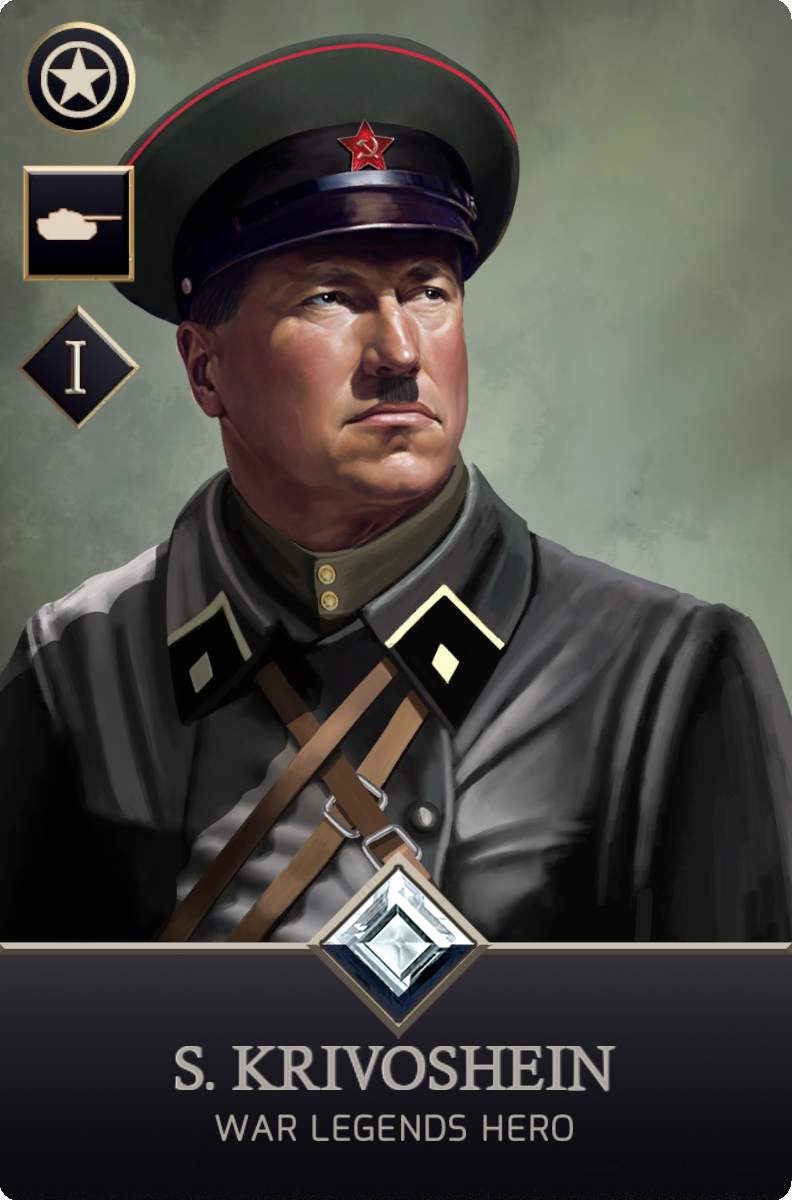


Hero Background
Semyon Krivoshein was born on 28 November 1899 in Voronezh in a Jewish family who ran a small business.
Despite graduating from a school for the elite in 1917, he was soon won over by Bolshevik ideology and enlisted in the Red Army, assigned to the First Cavalry Army to fight the White Army in the Russian Civil War.
After the end of the Russian Civil War in 1923, Krivoshein was sent to the military school in Frunze where he graduated, later holding the rank of major in charge of a mechanized regiment in 1933.
In 1936 Krivoshein took part in the Spanish Civil War on the Republican side, most notably in the Battle of Madrid, commanding a small tank brigade, which was defeated by the Nationalist forces.
He also collaborated in the transfer of gold from the Bank of Spain, with more than 510 tons of gold extracted and loaded onto Soviet ships.
Back in the USSR he was promoted to commander of the 8th Independent Tank Brigade and assigned to Belarus in 1937.
After the invasion of Poland, Krivoshein was sent to Finland, in what would later be called the "Winter War", where he again demonstrated his combat prowess, despite the strong Finnish resistance. For his intervention in this conflict Semyon was promoted to commander of the Baltic forces.
Due to the inability of the USSR to neutralize the German advance, the Soviet military high command decided to reform the armed forces, for this purpose they agreed to the presence of Krivoshein due to his extensive combat experience and he was appointed Chief Director of the Red Army tank forces, achieving great achievements in the defense of the field.
During the Battle of Kurks in 1943, on 7 July, General Hoth, in charge of the German Panzers, led the main body of the attack composed of Tigers and Ferminands self-propelled guns against Krivoshein, which during the day managed to penetrate the Soviet defense due to the technical superiority of the former. Despite this, Krivoshein managed to hold positions.
The next day, the Germans, in desperation, decide to launch a new attack against Krivoshein, but the attack fails to penetrate the Russian defenses because Krivoshein takes up a defensive position.
After an arduous day of fruitless efforts for the Germans, on the 9th, Ernnan Hoth decides to launch another attack against the defensive lines near Prokhorovka, exposing his right flank, a circumstance that the Soviet 5th Tank Army uses to deal a mortal blow to the Panzer Army, causing it to retreat and lose the battle on the 12th of July.
As a result, Semyon Krivoshein was awarded the rank of Lieutenant General and the distinction of the "Order of Suvorov", the highest Soviet decoration.
In 1944, during the Battle of Berlin after recapturing the Belarusian city of Brest, Krivoshein, commanding the 1st Mechanised Corps, moved towards the German defenses, breaking through their dense fortifications in what was called the Battle of Seelow. Semion Krivoshein reached the Reichstag itself.
For his valuable contribution to the capture of Berlin, Krovoshein was awarded the distinction of "Hero of the Union".
After Stalin's death, Krivoshein put an end to his prolific career, devoting himself after his retirement to writing his memoirs, and died on 16 September 1978 in Moscow at the age of 79.








